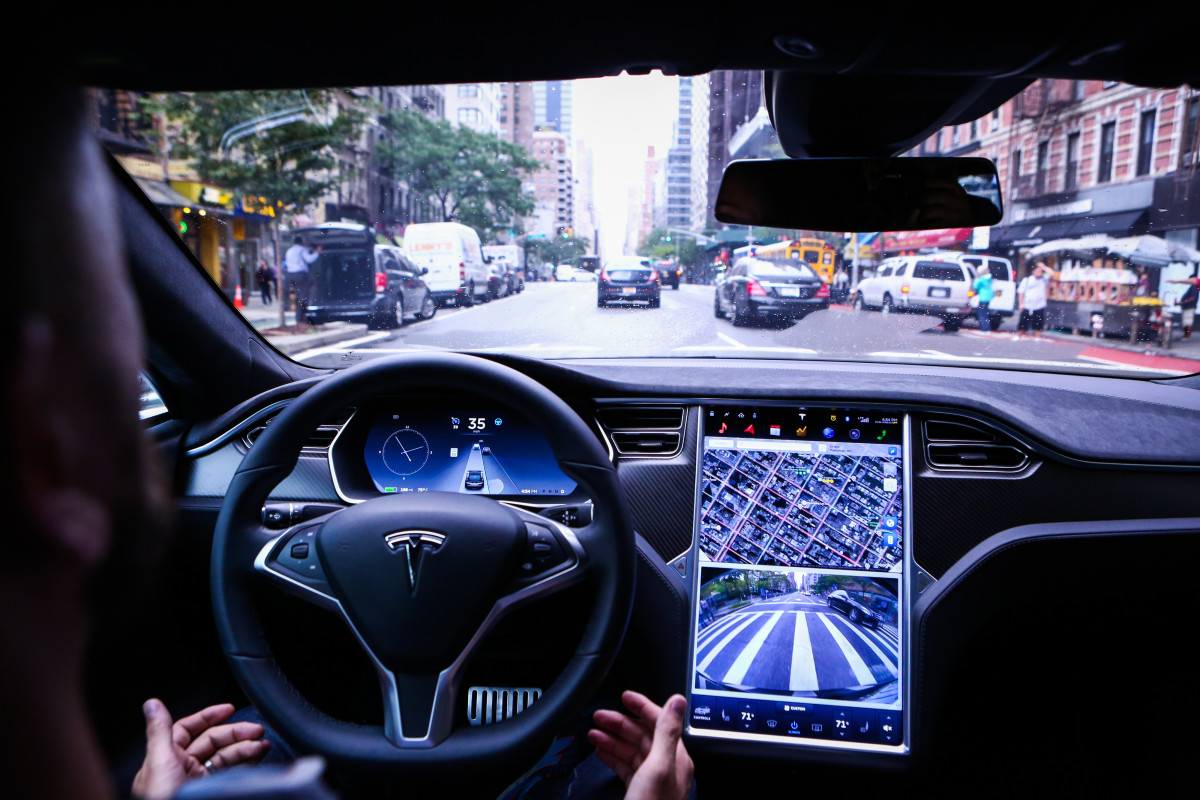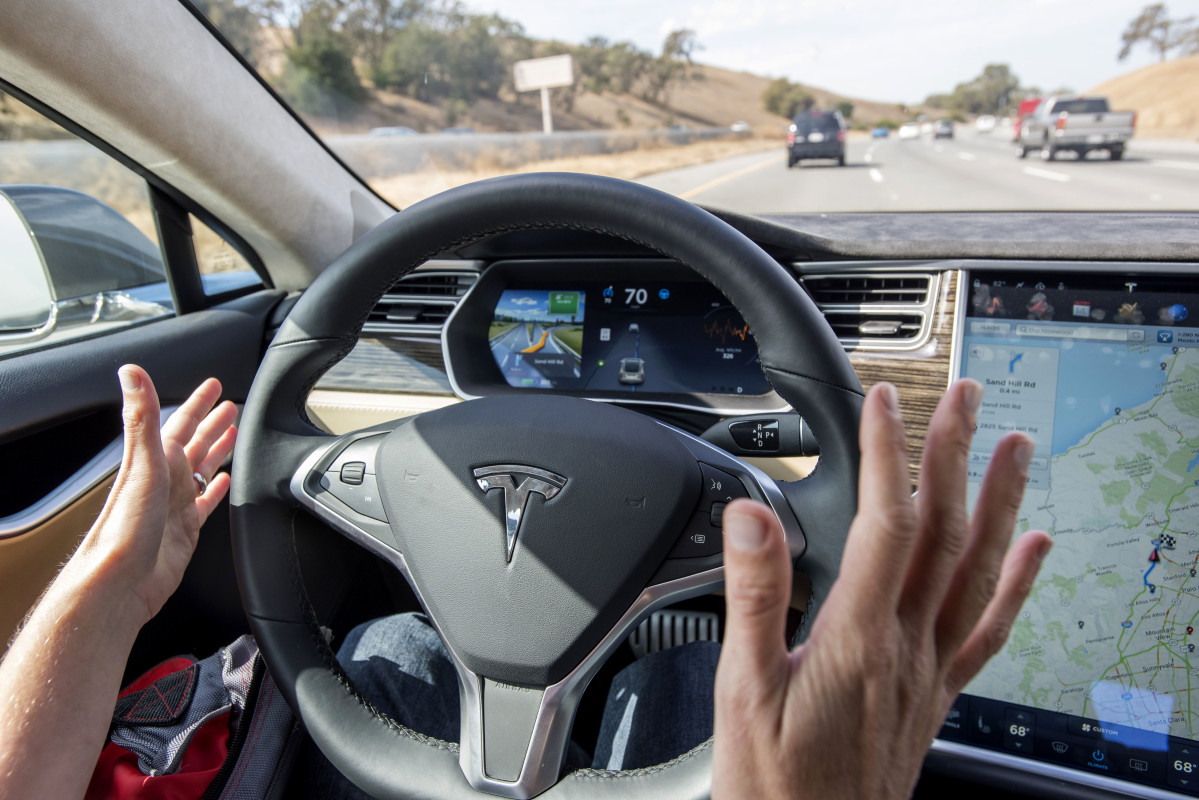
Tesla's (TSLA) Autopilot driver assistance system is one of the automakers' most well-known technologies, promising drivers a hands-free driving experience in equipped vehicles.
Though it sounds like a feature straight out of a futuristic science fiction novel or movie, the reality is that it might be too good to be true.
In a recent report first picked up by Business Insider, current and former Tesla employees tasked with improving Autopilot told the publication that at times, their colleagues were intent on teaching it to drive more "human-like," teaching it to disobey traffic signs like "No Turn On Red" or "No U-Turn"
Related: Tesla employee exposed a dangerous safety flaw in Autopilot
Additionally, U.S. prosecutors are investigating whether Tesla committed wire or securities fraud by misleading its customers and investors about the actual capabilities of the Autopilot software.
However, a new study suggests that Autopilot and similar technologies in other cars may be breeding the next generation of bad drivers who may be doing anything under the sun behind the wheel but looking at the road and driving.

Autopilot to distraction
According to a recent report by the Insurance Institute for Highway Safety (IIHS), drivers are likelier to multitask behind the wheel, doing distracting activities like playing with their phone or eating when a partially automated driving system like Tesla's Autopilot is on.
The institute collected the results of two separate studies that were jointly conducted with researchers from the Massachusetts Institute of Technology AgeLab. The researchers examined driver behavior when using one of two partially automated driving systems from two different brands: Volvo's (VLVLY) Pilot Assist and Tesla's Autopilot.
The results of the separate studies showed that better safeguards are needed to ensure safe, attentive driving.
In the IIHS's tests with the Volvos, the behaviors of 29 volunteers supplied with a 2017 Volvo S90 sedan equipped with Pilot Assist software were analyzed to see "how likely drivers were to engage in nondriving activities" when Pilot Assist was turned on.
In their findings, all the drivers were emboldened enough to do activities that took their eyes off the road when using Pilot Assist, which required drivers to keep their hands on the steering wheel.
More Automotive:
- The Toyota Crown is a masterclass in cheap, quiet luxury
- Ford making radical change that might anger loyal consumers
- Gavin Newsom's 'EV mandate' is under U.S. Supreme Court threat
In a separate study, a different group of IIHS and MIT researchers examined 14 people who used Tesla's Autopilot for the first time. The participants were provided with 2020 Tesla Model 3s equipped with Autopilot, and in the span of one month, the participants drove a total of over 12,000 miles using Autopilot and triggered 3,858 attention-related warnings.
During this time, the participants learned how to respond more effectively and quickly to the alerts, which emboldened them to do things behind the wheel that weren't driving and kept their eyes off the road.
"These results are a good reminder of the way people learn," IIHS President David Harkey said in a statement. "If you train them to think that paying attention means nudging the steering wheel every few seconds, then that's exactly what they'll do."
"In both these studies, drivers adapted their behavior to engage in distracting activities," Harkey said. "This demonstrates why partial automation systems need more robust safeguards to prevent misuse."
Related: House approves bill that could paralyze US EV development
On Volvo's website, the Swedish automaker states that "the driver’s hands must be on the steering wheel" in order for Pilot Assist to work. Additionally, Volvo implores that it is important for drivers to be "active and alert" when driving, "as Pilot Assist is unable to read all situations and the function may toggle between off and on without prior warning."
The automaker also warns that Pilot Assist is "not a collision avoidance system" and that it is not able to "brake consistently" for hazards like humans, animals, or people on bicycles or motorcycles. Additionally, it reminds drivers that they "must intervene if the system does not detect a vehicle ahead."
Additionally, Tesla's website notes that Autopilot and the associated Full Self-Driving software are intended to be used "with a fully attentive driver, who has their hands on the wheel and is prepared to take over at any moment." They also warn that "while these features are designed to become more capable over time, the currently enabled features do not make the vehicle autonomous."
Volvo (VLVLY) was up 1.88%, trading at $25.47 per share at last check.
Tesla Inc. (TSLA) was up 0.48%, trading at $227.87 per share at last check.
TheStreet has reached out to Volvo and Tesla for comment.
Related: Veteran fund manager sees world of pain coming for stocks







